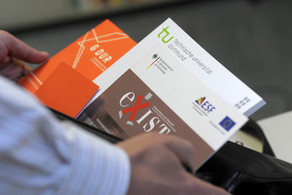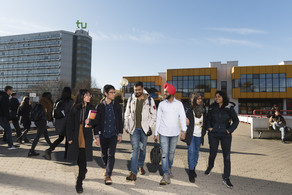Researchers Predict Handball World Champion 2019
- Research
- Top News
- Press Releases
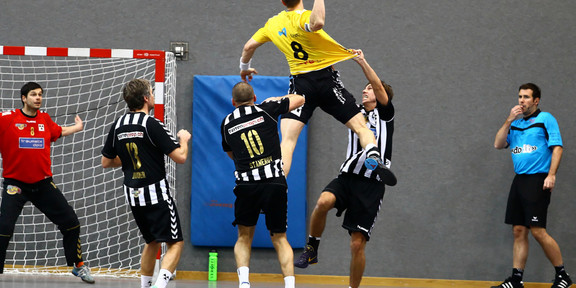
Denmark will win the 2019 World Handball Championship. This is the forecast made by scientists from TU Dortmund University, Ruhr-University Bochum and Technische Universität München using a statistical model. The team will know whether the forecast is correct when the tournament held in Germany and Denmark ends on January 27th.
According to the analysis, France, Croatia, Denmark and Hungary will win the four preliminary groups. Denmark will become world champion with a probability of 41.2 percent; the probabilities for a win by France or Croatia are 18.4 and 9 percent respectively. The model sees the chances of a German overall victory at 6.4 percent.
Similar method to predicting epidemics
Data analysis has become popular in sports – among other things for scouting or to determine odds. The bookmakers as well as the scientific model currently see Denmark and France in particular as favorites for the handball title. The team led by Prof. Dr. Andreas Groll from the Department of Data Analysis and Statistical Algorithms at TU Dortmund University created it together with the Dortmund graduate Jonas Heiner and the Bochum handball expert Jörn Uhrmeister as well as Dr. Gunther Schauberger from the Munich Department of Epidemiology.
The algorithm used by the scientists is similar to the one used to predict epidemics. After announcing the provisional squad of 28 players for the World Handball Championship, they modelled the course of the tournament and simulated hundreds of thousands of different outcomes, calculating a probability for each outcome. “In each individual simulation, each match in the group phase was predicted according to the model,” said Schauberger. “Building on this, we predicted the further course of the tournament up to the world champion.”
Many factors included
Numerous factors were incorporated into the model:
- the body measurements of the players
- the number of players who reached the final of the Champions League or the European Cup in the previous season
- the fact whether there are groups of nominated players from the same club who are supposedly used to playing well together
- the strength of the national league
- the number of players engaged abroad and their playing level
- the place in the world rankings
- the standing of the continental federation to which a nation belongs
- country population and gross domestic product
- the home advantage of the two host nations
- age and the contract duration of the coach and his origin compared to the country where he is engaged
Chance plays a lesser role than in football
Part of the research team had already used this methodology to make forecasts for the past two football World Cups, but similar forecasts for handball tournaments had not yet been made. “In handball, chance plays a lesser role than in football,” said Jörn Uhrmeister. “Since there are more countable events, i.e. more goals, the favorite usually prevails." Consequently, it should be easier to predict a handball world champion than a football world champion. “However,” Uhrmeister continued, “it is of course still unclear which players might get injured, whether an individual player is in outstanding form during a match or whether a team will go on a scoring spree.” It is also possible that the method is too strongly focused on individual variables.
According to Jörn Uhrmeister, it is particularly tricky to predict who will win out in duels between two European nations: “Handball is only popular in a few countries outside Europe, and so the continental federations there play a subordinate role behind the European federation,” he said. It was only once that a non-European nation won a medal at a major tournament: when Qatar finished third in its own country at the 2015 World Cup.
To the overview of all analysis results
University Alliance Ruhr
Since 2007, the three Ruhr universities in Bochum, Dortmund and Duisburg/Essen have been working closely together under the umbrella of the University Alliance Ruhr (UA Ruhr). By bundling competencies, the services of the partner universities are systematically expanded. Under the motto “better together”, there are now more than 100 cooperative projects in research, teaching and administration. With more than 120,000 students and almost 1,300 professors, the UA Ruhr is one of Germany’s largest and most efficient science locations.


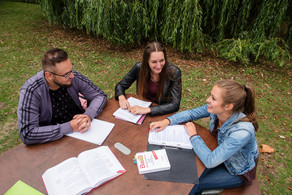

![[Translate to English:] Partner Four hands are holding the green logo of TU Dortmund University](/storages/tu_website/_processed_/1/d/csm_Partner_Nicole_Rechmann_KW_40b35bb3fd.jpg)

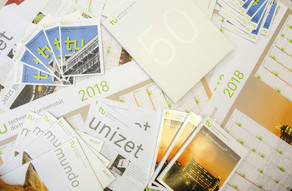


![[Translate to English:] Forschung An apparatus with tubes in a laboratory](/storages/tu_website/_processed_/0/c/csm_Forschung_Juergen_Huhn_cbd34afd6d.jpg)
![[Translate to English:] Studium Five students are sitting in a lecture hall. They are talking to each other.](/storages/tu_website/_processed_/c/9/csm_Studium_FelixSchmale_81d94adc86.jpg)
